IT asset management, also known as ITAM, involves the monitoring of an organization’s technological assets and associated data. The gathered data typically comprises an inventory of IT assets, details regarding an asset’s lifecycle, and relevant financial or contractual information. It is a process that oversees and optimizes IT hardware, software, data, and systems.
IT asset management plays a crucial role due to the following reasons:
Enhances Visibility IT asset management enhances visibility across all IT assets within a business. IT asset management solutions focus on the lifecycle of IT assets in your environment, and keeping tabs on every single device or machine aids IT teams in accomplishing this task. It also provides complete knowledge of your endpoints and real-time information, which is indispensable for diagnosing any endpoint issues within your IT environment.
Institutes Structure Keeping track of IT assets and their related data also introduces structure and stability to your environment by facilitating the arrangement and organization of assets. With an ongoing updated knowledge of devices that leave, enter, or are active in your network, it empowers superior management of IT assets and more informed decision-making about the purchases and expenses related to these assets.
Mitigates Risks IT asset management enables you to mitigate security risks in your IT environment. While every IT asset inherently comes with security risks, IT asset management provides enhanced visibility and current information on their health and performance to ensure devices are secure and protected. It also simplifies adherence to compliance frameworks such as HIPAA, GDPR, NIST, and more as it provides you with the status of and information about every device and asset within your organization.
Minimizes Costs IT asset management assists organizations in reducing their IT costs. Tracking devices and their performance can yield essential information about their overall health, indicating when they need replacement. Device warranties can also be easily accessible through IT asset management software so you are aware when a device warranty ends and can avoid unnecessary expenses, which financially impact your organization. Ultimately, IT asset management aids you in maximizing your return on investment (ROI).
Executing IT Asset Management The most rudimentary method to manage IT assets involves using a spreadsheet. This demands a member of the organization to physically locate the organization’s IT assets and document the information in the spreadsheet. A more efficient method involves utilizing online tools to record IT asset information.
While both the methods above are viable, they might not be the most suitable if you aim to elevate your business’s IT methodologies and processes through effective management of your IT assets. Specialized IT asset management tools allow you to easily input information about each IT asset, identify unmanaged devices, and receive real-time data for each of your IT assets.
If you’re exploring IT asset management software with the goal of creating an IT asset inventory, using an endpoint management tool in conjunction with IT asset management software, like NinjaOne, might be the perfect solution. With an agent-based approach, an agent is installed on each new device to facilitate remote monitoring and management. The agents will automatically update the software with an inventory of all your devices.
Looking for more control over your IT assets? Explore NinjaOne’s IT Asset Management software.
IT Asset Management Tools The tools used in IT asset management empower IT teams to systematically manage their IT devices. Key IT asset management tools encompass procurement, asset discovery, asset lifecycle tracking, real-time information, and IT asset auditing and reporting. Learn more about each of these crucial IT asset management tools and discover why each is necessary.
1. Monitor IT Asset Lifecycles Monitoring each of your IT assets from procurement to retirement allows you to extract the maximum possible value from each device in your environment.
2. Employ Automation Automated tasks and functions save time and bring efficiency to your organization’s IT asset management process.
3. Adopt IT Asset Management Software IT asset management software was explicitly designed for the purpose of managing your business technology, hence using this type of software provides the best tools to categorize, locate, and manage assets.




©2019 by SeedTech LLC • Terms and Condition
SeedTech LLC prioritizes user privacy and outlines how consumer contact information is handled. Contact details are voluntarily provided and used for service updates, inquiries, promotions, and service improvement. Information is never sold, leased, or traded, but may be shared when required by law or with trusted providers under confidentiality agreements. Reasonable data protection measures are employed. Consumers have access, correction, and deletion rights by contacting support. Policy updates will be communicated. For inquiries, contact info@seedtechllc.com


